Welcome to On Verticality. This blog explores the innate human need to escape the surface of the earth, and our struggles to do so throughout history. If you’re new here, a good place to start is the Theory of Verticality section or the Introduction to Verticality. If you want to receive updates on what’s new with the blog, you can use the Subscribe page to sign up. Thanks for visiting!
Click to filter posts by the three main subjects for the blog : Architecture, Flight and Mountains.
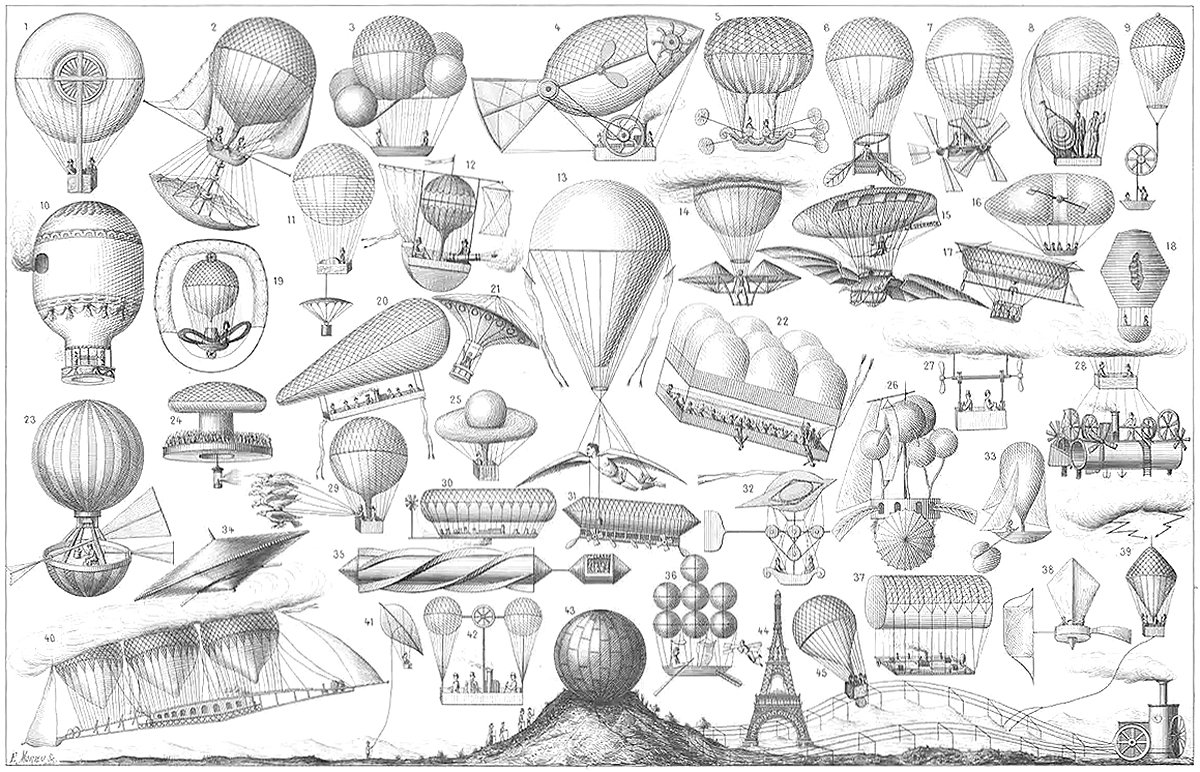
A Compendium of Dirigibles
Pictured above is an exhaustive collage of early dirigible designs, circa 1885 by E. Morieu. As far as I can tell, there’s forty-five designs in total, and many of them seem quite unique. Most likely the original print was paired with a descriptive list, but unfortunately this link has since been broken. Even so, there’s great beauty in the variety of the designs shown here, as well as the creative spirit that led to all of them. A collage like this is evidence of the human need for verticality, that all these individuals would put so much time and effort into achieving human flight.
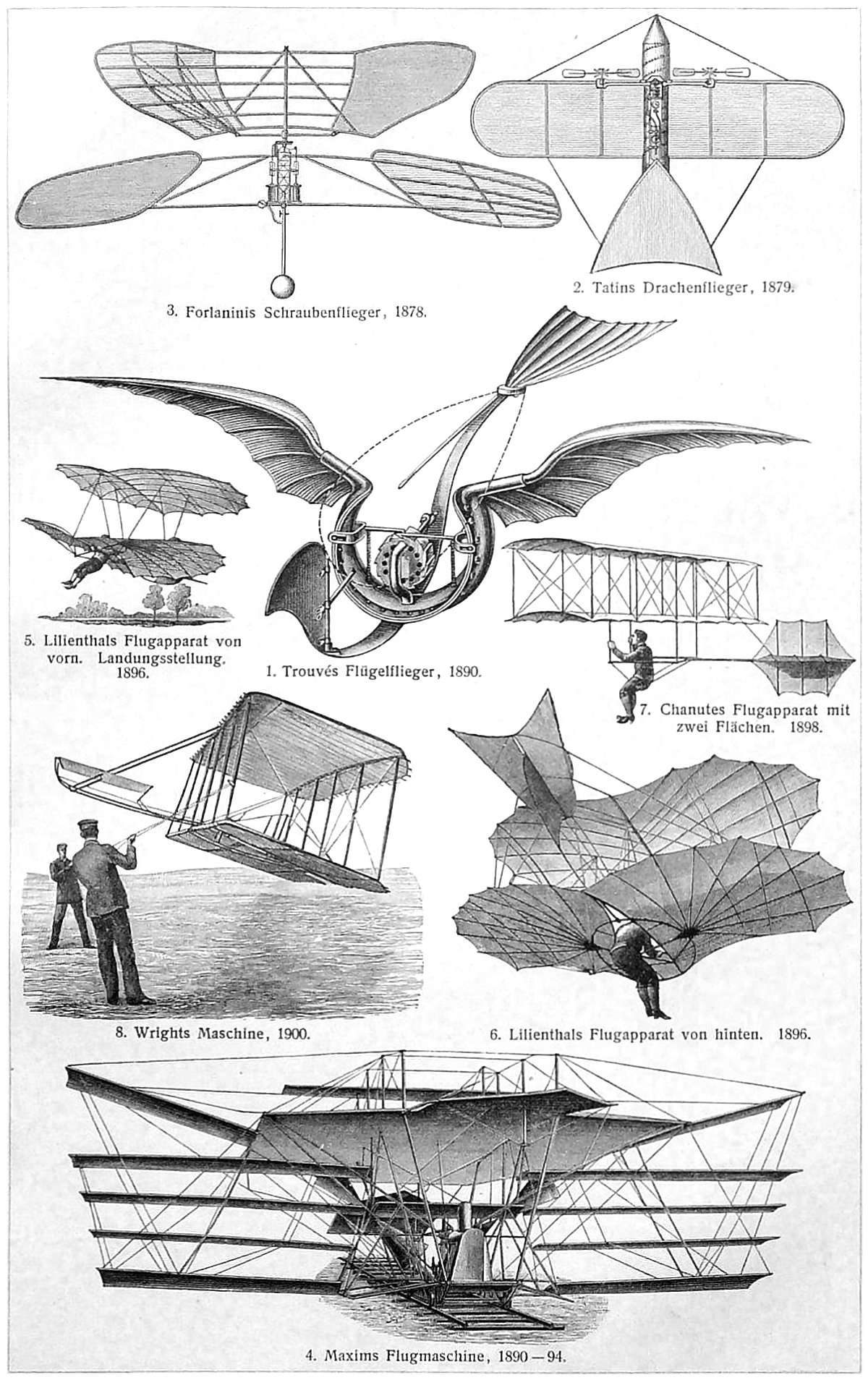
Early Aeronautics
Pictured above is a collage of early flying machines, originally published in the German encyclopedia Meyers Konversations Lexikon. I love collages like this because the illustrator inevitably must pick and choose which examples to show. This is most likely done for a combination of reasons, including available illustrations, the most famous examples, and page layout.
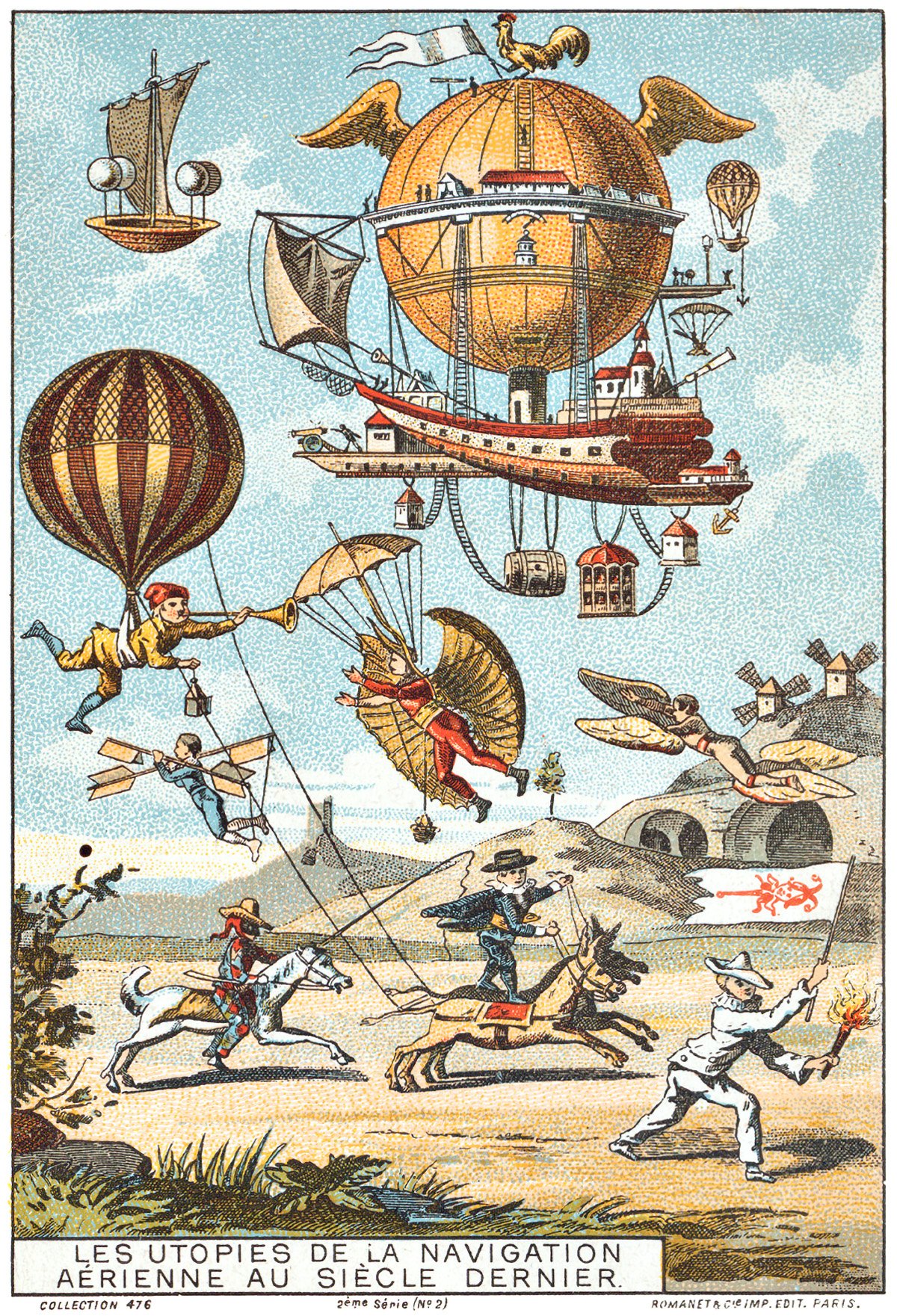
Utopian Flying Machines of the Previous Centuries
Pictured above is a French illustration from 1890, showing a collage of French flying machine ideas from the previous few centuries. The caption reads Les Utopies de la Navigation Aérienne au Siècle Dernier, which means The Utopia of Air Navigation in the Last Century. There are six flying machine ideas shown together in the sky.
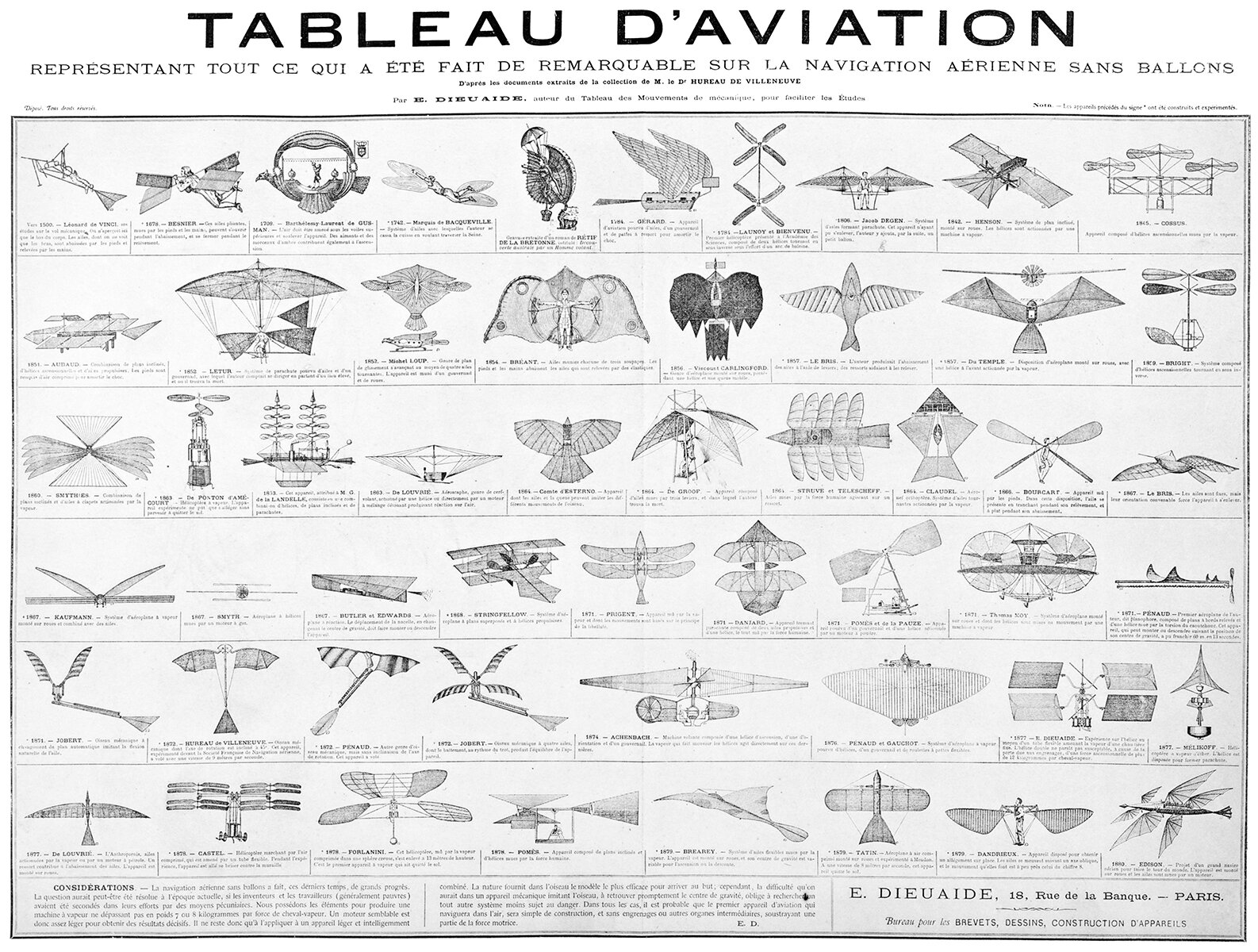
Tableau d’Aviation
The creativity and ingenuity on display throughout the history of flying machines is amazing. A quick survey of the table above shows the wide variety of ideas tried out before we humans successfully learned how to fly. One thing I love about this table is that it includes fictional flying machines as well as real prototypes. This shows that fictional designs can and have influenced the history of flight just as real prototypes have.
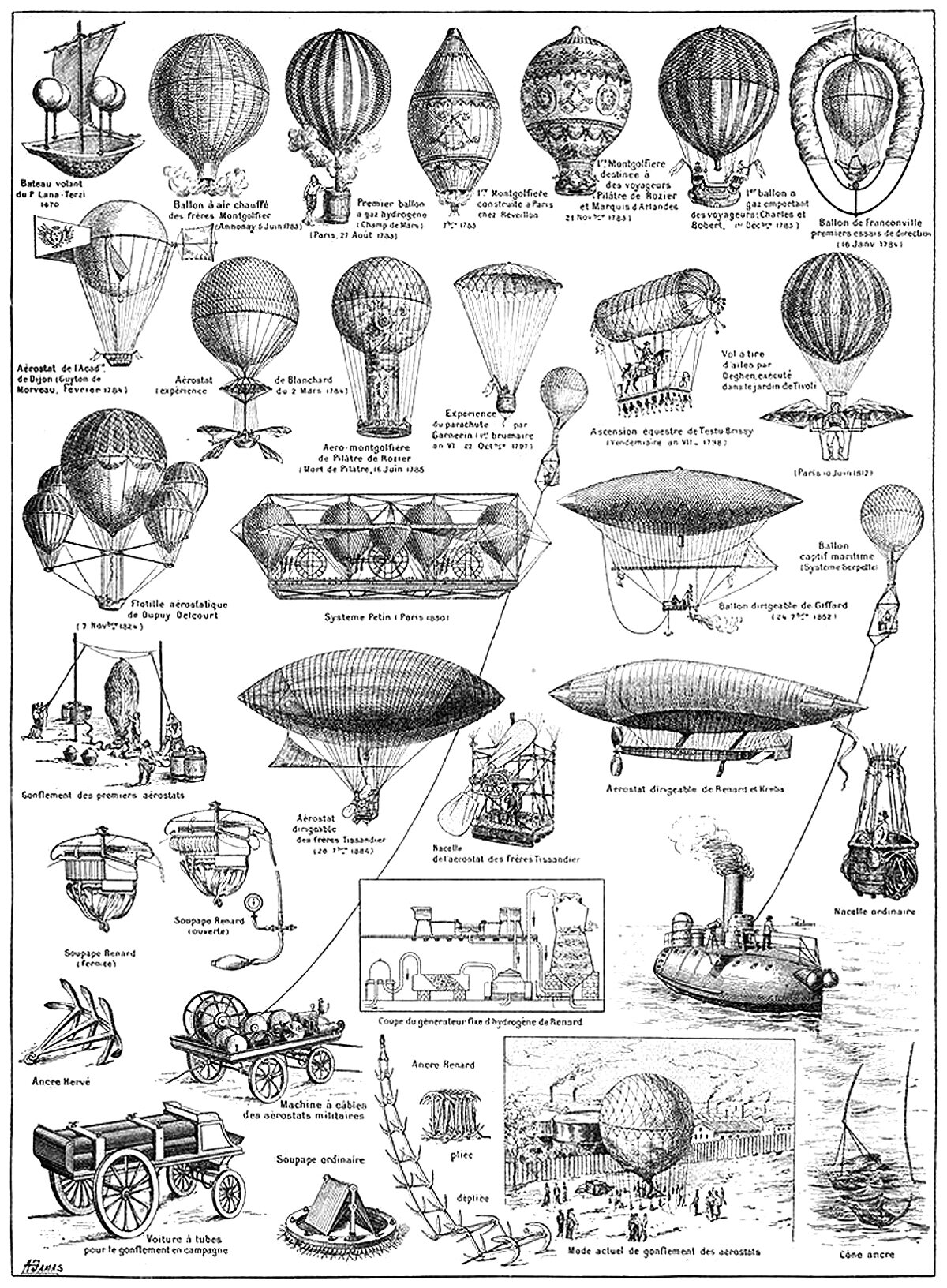
Early Balloon Designs
There are two main strategies when designing a flying machine. The first is a heavier-than-air machine, which relies on creating a lifting force to overcome gravity. The second is a lighter-than-air machine, which relies on a balloon filled with gas or heated air. The above illustration shows famous examples of the latter.
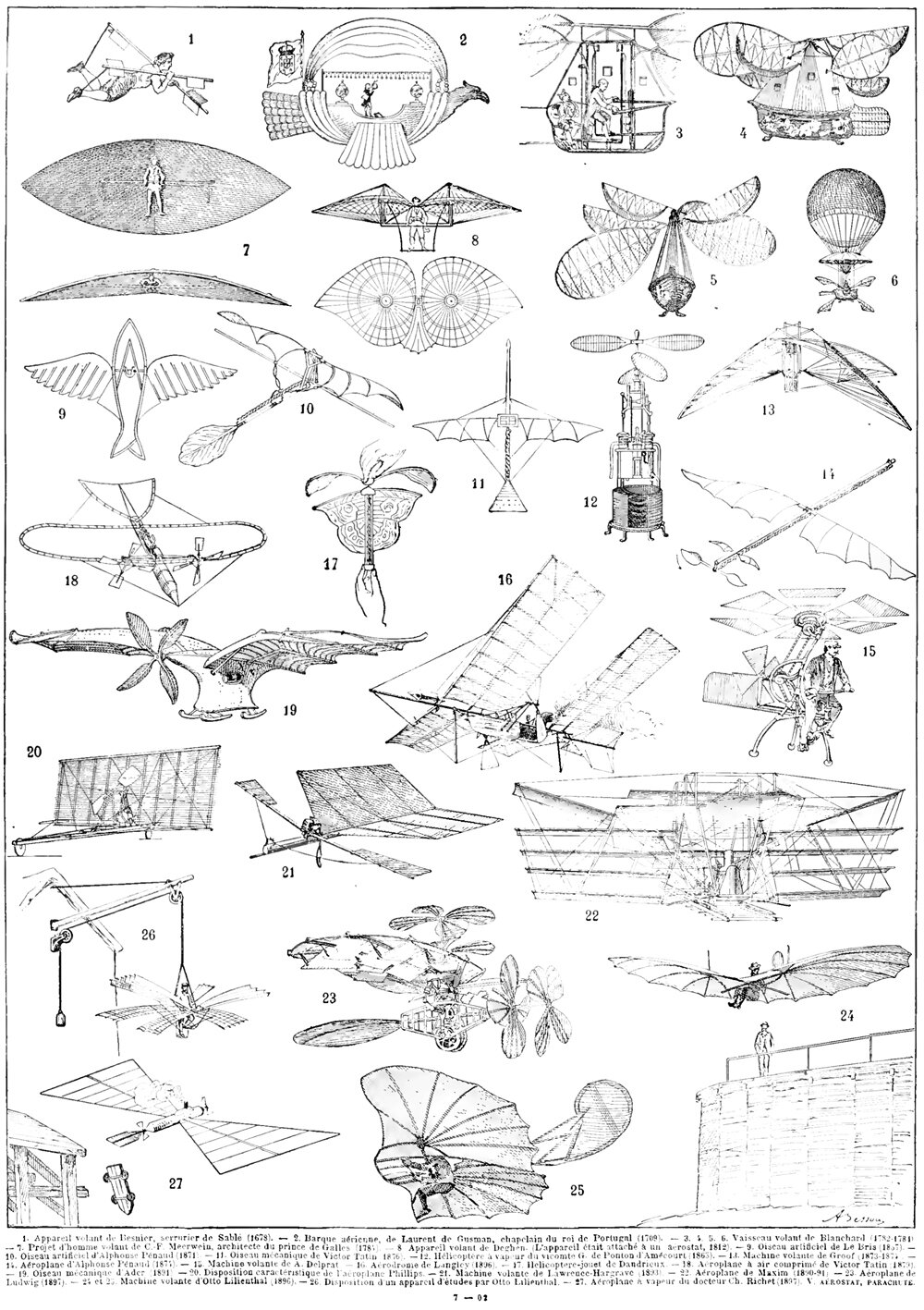
Flying Machines
Throughout history, humans have been fascinated with flight, and some of our more industrious brothers and sisters have dedicated their lives to achieving it. This has led to a rich lineage of ideas for flying machines, and the illustration pictured here shows some famous examples throughout this lineage.
